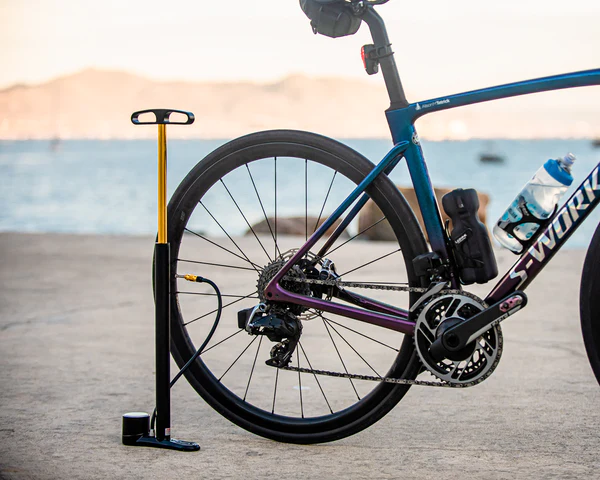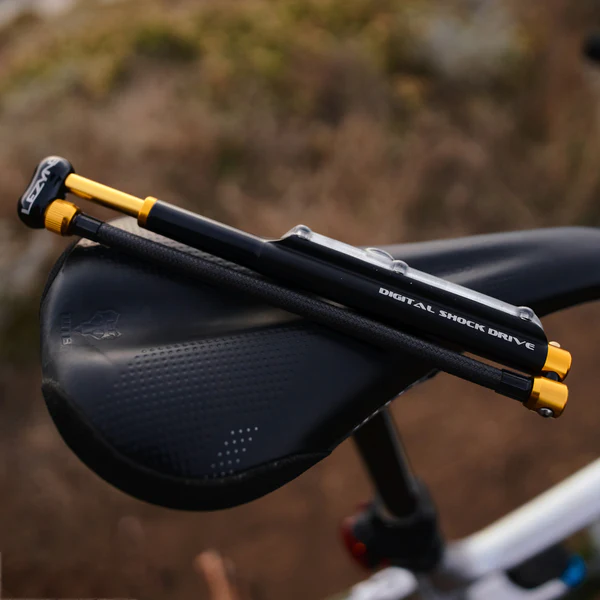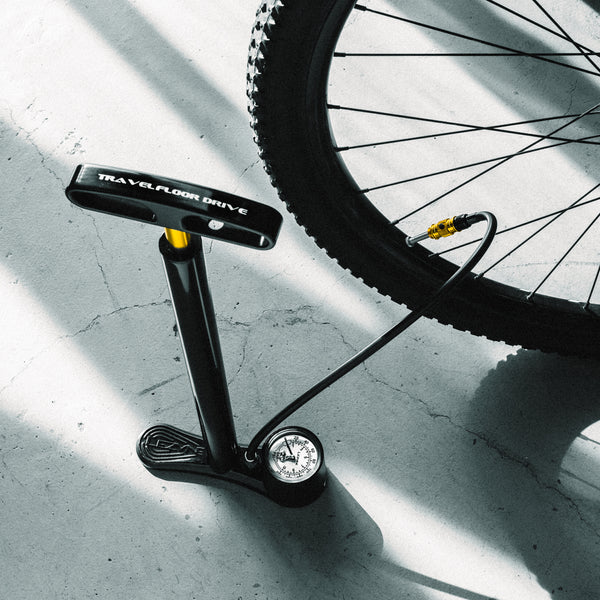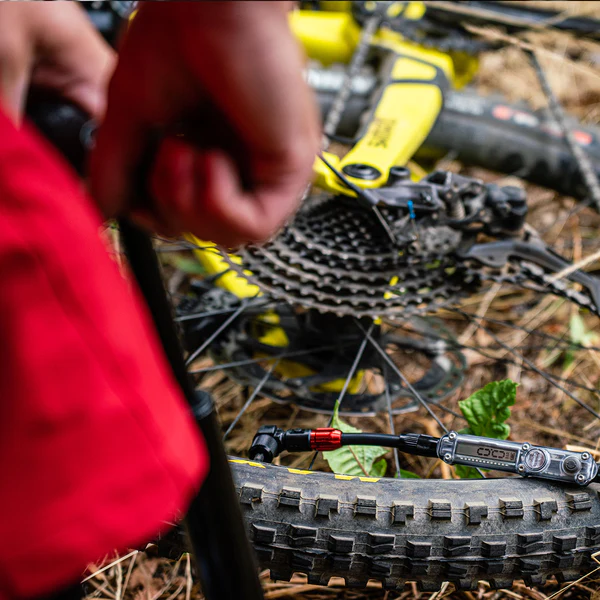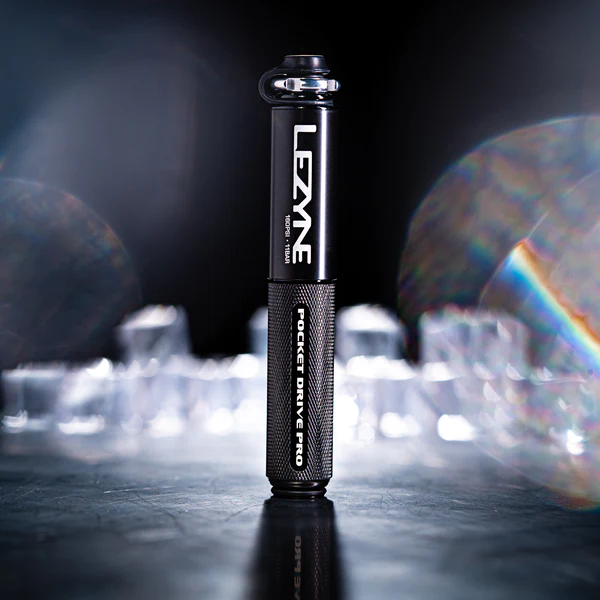An Overview: Using a CO2 Inflator Versus a Traditional Bike Pump

Key Point Summary of Using a CO2 Inflator Versus a Traditional Bike Pump:
- Speed and Convenience: CO2 inflators provide rapid tire inflation, ideal for race situations or when in a hurry.
- Portability: CO2 inflators are lighter and more compact than most pumps, making them easy to carry.
- One-time Use: CO2 cartridges are single-use, requiring cyclists to carry multiple for longer rides.
- Precision and Control: Traditional pumps offer more control over inflation and can be used multiple times.
- Environmental Consideration: CO2 cartridges are not reusable, raising environmental concerns.
CO2 Inflator Versus Bike Pump: An Overview
Speed and Convenience with CO2
The most significant advantage of a CO2 inflator lies in its ability to rapidly inflate a flat tire, getting you back on the road or trail in seconds. This feature is particularly invaluable during races or group rides where time is of the essence. The quick burst of CO2 can fill a standard road tire to high pressure with minimal effort and time.
The Portability of CO2 Inflators
When it comes to saving space and reducing weight, CO2 inflators excel. Their compact size allows them to fit easily into a jersey pocket or saddlebag, alongside spare tubes or patch kits. This makes CO2 inflators a popular choice for cyclists looking to minimize their load, especially during competitive events.
One-time Use Limitation
One downside to CO2 inflators is that each cartridge is single-use. After a tire is inflated, the cartridge is empty and must be replaced. For long rides or remote adventures, this means carrying multiple cartridges, which can add up in weight and cost.

Precision and Reusability of Bike Pumps
Traditional bike pumps, whether they are mini pumps or frame-mounted, offer the advantage of controlled inflation. You can easily adjust the pressure to suit your tire’s needs and the terrain you’re riding on. Moreover, a pump can be used repeatedly, making it a more sustainable option for regular cyclists.
Environmental Considerations
It’s worth noting the environmental impact of CO2 cartridges. Being single-use, they contribute to waste, which is a concern for eco-conscious cyclists. In contrast, traditional pumps have a longer lifespan and generate no waste with each use.
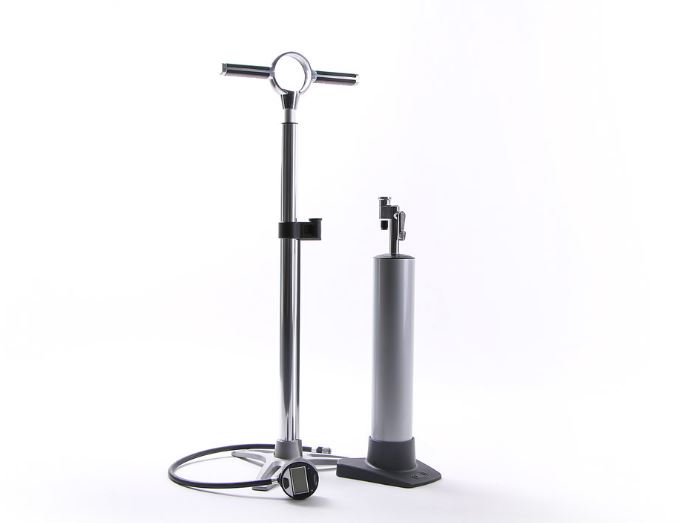
Making the Choice: Situational Considerations
For Racing and Fast Paced Rides
In competitive scenarios or when riding in groups, the quick inflation provided by CO2 inflators can be a game-changer, allowing you to rejoin the action without significant delay.
For Leisurely Rides and Touring
During solo rides, tours, or when you have the luxury of time, a traditional bike pump can be more advantageous. It offers the flexibility of multiple uses and precise control over tire pressure, ensuring you’re prepared for whatever the ride brings.
Weight and Space Constraints
If you’re trying to minimize your carry-on weight or if space is at a premium, the compact and lightweight nature of CO2 inflators might sway your decision, despite their single-use limitation.
Environmental and Cost Considerations
For those mindful of their environmental footprint or looking for a cost-effective solution for regular riding, traditional pumps are the way to go. Their reusability aligns with both economic and environmental considerations.
In Conclusion
Deciding between a CO2 inflator and a traditional bike pump depends largely on your specific cycling activities, priorities, and values. While CO2 inflators offer unmatched speed and convenience, making them ideal for racing situations, traditional pumps provide control, sustainability, and are suited for a wide range of cycling experiences.
As someone who’s encountered nearly every type of flat tire situation imaginable, I’ve found value in carrying both: a CO2 inflator for quick fixes during competitive rides and a mini pump for leisurely adventures where time isn’t as critical. Understanding the benefits and limitations of each will help you make the right choice for your cycling needs.

One of the best CO2 bike pumps on the market is the Genuine Innovations Ultraflate.
Genuine Innovations Ultraflate
- Why It Stands Out: The Genuine Innovations Ultraflate is renowned for its reliability, ease of use, and versatility. It’s compatible with both threaded and non-threaded CO2 cartridges and works with Presta and Schrader valves, making it a versatile choice for cyclists across disciplines.
- Key Features:
- Trigger Control Technology: Allows for easy and precise inflation, giving users control over the amount of CO2 released.
- Compatibility: Works with 16, 20, and 25-gram threaded and non-threaded cartridges, offering flexibility depending on the ride’s demands.
- Safety Features: Includes a built-in trigger lock to prevent accidental discharge and a durable insulating sleeve to protect hands from the cold CO2 canister.
- Portability: Its compact size and lightweight design make it easy to carry in a jersey pocket or saddlebag.
The Genuine Innovations Ultraflate’s combination of functionality, durability, and ease of use makes it a top choice for cyclists looking for a reliable CO2 inflator for their rides.
However, Topeak does offer a solution that combines the convenience of CO2 inflation with the reliability of a manual pump, providing a versatile option for cyclists.
Topeak HybridRocket RX
- Why It Stands Out: The Topeak HybridRocket RX combines the best of both worlds: it functions as a mini pump while also offering the option to use a CO2 inflator for rapid inflation. This dual-functionality makes it exceptionally versatile, and suitable for emergencies or routine inflation.
- Key Features:
- Dual-Function: Manual pumping capability with an integrated CO2 inflator for when you need a quick fix.
- Aluminum Construction: Durable and lightweight, ideal for weight-conscious cyclists.
- SmartHead ThreadLock: Works with both Presta and Schrader valves without needing to swap parts, ensuring a secure connection.
- Compact and Lightweight: Designed for portability, it easily fits in a jersey pocket or mounts to a bike frame.
- CO2 Compatibility: Accepts all threaded CO2 cartridges, though it’s typically used with 16g cartridges for a balance of size and air capacity.
While not a CO2 inflator in the traditional sense, the Topeak HybridRocket RX offers cyclists the flexibility of manual pumping with the speed of CO2 inflation, making it a unique and valuable tool for both casual rides and competitive events.
JoeBlow, known for their high-quality floor pumps like the JoeBlow Sport III and JoeBlow Booster, specializes more in workshop and home use solutions, focusing on durability and precision in air delivery for all types of bicycles but does not specifically offer a CO2 inflator product line. Their expertise lies in creating reliable, efficient pumps for at-home maintenance and pre-ride preparation rather than on-the-go inflation solutions.

FAQ
Is CO2 better than air for bike tires?
CO2 inflates tires faster and is more portable than air pumps, making it convenient for mid-ride inflation. However, CO2 can leak more quickly from tires than air and is single-use, so for regular maintenance, air is more practical and cost-effective.
Can I use car air pump for bike?
Yes, you can use a car air pump for bike tires, but ensure it fits your bike’s valve type (Presta or Schrader) and be cautious with the pressure settings to avoid overinflation.
Can I use an air compressor to inflate bike tires?
Yes, an air compressor can be used to inflate bike tires, provided you have the correct adapter for your tire’s valve type and closely monitor the pressure to prevent overinflation.
Do you need a special air pump for bike tires?
While not strictly necessary, using a bike-specific pump with a pressure gauge is recommended for precision and to accommodate the specific valve type (Presta or Schrader) of your bike tires, ensuring proper inflation and avoiding damage.
